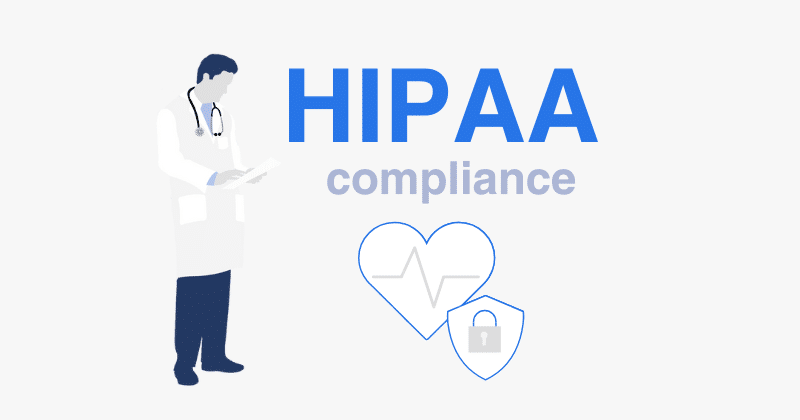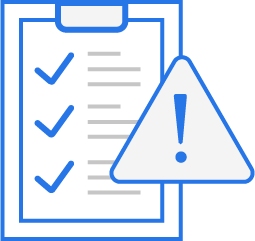The healthcare industry is in the midst of a digital transformation, with mobile devices and remote access leading the charge. Think about it: smartphones, tablets, and laptops have become essential tools for today’s healthcare professionals, enabling them to access patient data, communicate seamlessly, and provide care from practically anywhere. It’s incredibly convenient, right? But this increased flexibility introduces new cybersecurity challenges, making a robust mobile security plan absolutely crucial, especially when you consider the strict regulations set by HIPAA. Bring Your Own Device (BYOD) policies and remote access, while boosting productivity and convenience, unfortunately open new doors for cyber threats and vulnerabilities. So, the real question is: How confident are you that your organization is both efficient and secure in this hyper-connected, mobile healthcare environment?
This isn’t just another dry compliance checklist. This guide is designed to be your go-to resource, offering practical best practices and key insights you need to navigate the complex world of mobile device security. We’ll break down the essential security measures critical for HIPAA Compliance, helping you build a strong mobile security strategy that’s easy to understand and implement. Think of it like building a strong foundation for a house—you need to know what to do, otherwise the whole structure is at risk.
The Escalating Need for Mobile Device Security in HIPAA Healthcare
Let’s face it, the healthcare sector has become a prime target for cybercriminals, and it’s easy to see why. The sensitive nature of patient data, combined with the high potential for financial gain, makes it a lucrative target. With the increased reliance on electronic medical records (EMRs) and the proliferation of mobile devices and remote working, it’s as if we’ve opened up multiple avenues for a potential breach.
A recent report from ENISA (European Union Agency for Cybersecurity) highlights this issue, showing a significant increase in ransomware incidents and data breaches within healthcare. Mobile devices, which are often unsecured, can be easily exploited, giving bad actors access to sensitive systems and data. Think of it like this: leaving your front door unlocked at night is basically an invitation to intruders, and that’s exactly what weak mobile security does. These incidents can have devastating financial, legal, and reputational consequences under HIPAA. (Ref. ENISA Threat Landscape Report, July 2023).
To protect against these potential issues, healthcare organizations need a comprehensive approach to mobile device security. This means understanding the potential threats and implementing policies and procedures designed to minimize risk. It’s not just about ticking boxes for compliance; it’s about creating a culture of security that’s woven into your daily work processes.
Understanding the HIPAA Security Rule and its Impact
The HIPAA Security Rule, which you can find under 45 C.F.R. Parts 160 and 164, Subparts A and C, lays out the national standards for safeguarding Electronic Protected Health Information (ePHI). It requires you to implement three critical types of safeguards: administrative, physical, and technical to ensure data confidentiality, integrity, and availability. These all apply to mobile devices, which is why understanding these is so important.
Administrative Safeguards:
This is like setting the rules of the game. It focuses on your policies and procedures for implementing and managing your security program. This includes conducting ongoing risk analysis and risk management to proactively identify and address any potential vulnerabilities.
-
Key areas here are staff training on security protocols and establishing ways to document and manage security incidents. It’s like teaching your team how to avoid tripping hazards, they need to know where they are and what to do.
-
Your management procedures should be reviewed consistently to ensure they align with all applicable regulations and standards.
Physical Safeguards:
These are the physical measures you need to protect electronic systems and equipment that store ePHI from unauthorized access and environmental threats. Think of this as your building’s security system – you need to have it in place and working.
-
Controls must limit access to places where mobile devices are stored, and also when accessing ePHI on a mobile device.
-
You need proper protocols for off-site storage and management of devices.
-
Implementing good workstation security can prevent a potential breach, even if you’re working outside of a traditional office environment.
Technical Safeguards:
These highlight the technology and policies related to its use that can protect electronic health information and control access to it.
-
This includes methods for granting access based on job requirements, establishing protocols for auditing and monitoring systems, and using encryption to protect ePHI both in storage and while it’s being transmitted.
-
Strong authentication methods are essential for securing remote access.
-
You also need to ensure that ePHI is securely transmitted over communication networks.
When implemented effectively, these standards create the framework for a robust mobile security program that meets all HIPAA compliance guidelines.
BYOD: Navigating the Security Challenges
BYOD policies can really increase efficiency for healthcare professionals, allowing them to use their own devices to access ePHI remotely. However, this also brings complexities that could compromise the security and integrity of sensitive patient data. Without proper planning and enforcement, it is like letting a swarm of bees into your house – chaotic. The lack of centralized security on BYOD devices is a major risk that demands a measured approach.
Main Risks Associated with BYOD
-
Data Loss & Theft: Mobile devices are easily lost, stolen, or misplaced. If a device is unencrypted, it could lead to a major HIPAA breach, exposing a large amount of ePHI. It’s like leaving a briefcase full of money on a park bench – someone’s likely to grab it.
-
Unsecured Network Access: Devices connected to public or unsecured Wi-Fi can be easily compromised and data intercepted. It’s like having a conversation in a crowded, public place – anyone could be listening.
-
Inconsistent Security Posture: Organizations have limited control over the software, updates, and security protocols of personally owned devices. This lack of control can create vulnerabilities that put your entire network at risk.
-
Malware and Phishing Attacks: Users can unknowingly download malware through infected apps or phishing scams, especially on non-managed devices. It’s like clicking on a suspicious email link and unknowingly downloading a virus.
Best Practices for Secure BYOD in Healthcare
-
User Education: Implement clear policies about employee responsibilities for their devices and the consequences of failing to protect ePHI. Make sure they know the “rules of the road”.
-
Data Segmentation: Separate personal data from company data on devices, using containers or segregated workspaces. It’s like having separate storage areas in your house for different kinds of items.
-
Endpoint Management: Deploy tools like Mobile Device Management (MDM) to monitor and manage devices, enforce security settings, manage updates, and allow remote wiping.
-
Consistent Application: Use only approved, vetted, secure apps. It’s like making sure the ingredients you use in a recipe are all good to consume.
-
Strong Authentication: Implement multi-factor authentication (MFA) to protect access.
-
Enforce Device Encryption: Use full-disk or application-based encryption to protect ePHI at rest. It’s like locking a file cabinet – if someone gets their hands on it, they can’t read it.
-
Software Updates: Ensure devices are patched with the latest software updates for both devices and applications.
Remote Access: Extending Security Beyond the Office
Remote access allows healthcare professionals to connect with patients and colleagues beyond the confines of physical offices, which is incredibly valuable. However, this flexibility does introduce some real security challenges.
Risks with Remote Access:
-
Compromised Credentials: Usernames and passwords can be easily compromised through phishing attacks, social engineering, or malware. It is like leaving your car keys out in the open.
-
Lack of Multi-Factor Authentication (MFA): Without MFA, remote access is significantly less secure, leaving systems vulnerable to attacks.
-
Unsecured Communication Channels: Improperly secured connections over public Wi-Fi can expose sensitive data to interception and manipulation. Think about talking in a crowded restaurant, anyone can listen in.
-
Endpoint Vulnerability: If end-user devices aren’t secure, any malware on those devices can be introduced into your network and expose ePHI.
Securing Remote Access
-
Multi-Factor Authentication: Require MFA for all remote access points.
-
VPNs: Route all traffic through your organization’s network via secure, encrypted connections. This is like using a tunnel for transportation; no one can see you.
-
Zero Trust Approach: Treat all users as a potential threat, continuously verifying identity at every access point.
-
Limited Privileges: Grant access only to the systems and data a user needs for their job.
-
Session Monitoring: Record and audit access activity and respond quickly to suspicious behavior. This is like having security cameras that monitor your building.
Building a Culture of Security
Beyond technical measures, fostering a strong security culture within healthcare organizations is crucial. This means training and awareness programs that encourage staff to make security a part of their daily work routine. The goal is to make cybersecurity awareness a natural part of operations, preventing breaches caused by human error, negligence, or malicious intent. It’s all about creating a security-conscious mindset.
-
Continuous Learning and Adaptation: Regularly update awareness campaigns to reflect new and emerging threats.
-
Empower Users: Ensure employees understand their role in securing patient data and are required to follow policies.
-
Accountability: Make sure employees understand the consequences of data breaches and know how to report any suspected security incidents.
-
Promote Transparency: Communicate with staff to build trust and a sense of shared responsibility.
Navigating the Complex Landscape of Mobile Security
As healthcare continues to integrate mobile technology, security challenges continue to increase. Healthcare organizations that take a holistic view of their security program, which takes into account the mobile environment, are in the best position to protect sensitive ePHI. The key is to implement and maintain proper procedures, technologies, and best practices.
By prioritizing security alongside the operational benefits of mobile technology, healthcare organizations can ensure both efficiency and compliance, protecting patient data, and reinforcing the public’s trust. Think of it like balancing your checkbook, both sides need to work to keep everything safe and in good order.
Conclusion: A Proactive Stance on Mobile Security
The integration of mobile devices and remote access in healthcare has brought both significant opportunities and considerable challenges. As the landscape continues to evolve, the need for stringent and adaptable security, particularly concerning HIPAA compliance, has never been greater. Healthcare organizations must have a proactive security mindset, ensuring that everyone, devices and technologies contribute to the secure environment.
It’s all about adopting a balanced approach where security isn’t just an afterthought, but integrated into every operation. You must maintain consistent monitoring, ongoing training, and always be willing to change to maintain that security. By committing to a security-first mentality and implementing best practices for BYOD and remote access, healthcare providers can protect ePHI and uphold the public’s trust and confidence.
Taking a proactive approach today can reduce the likelihood of future breaches, protecting sensitive data and ensuring high quality patient care for all.






